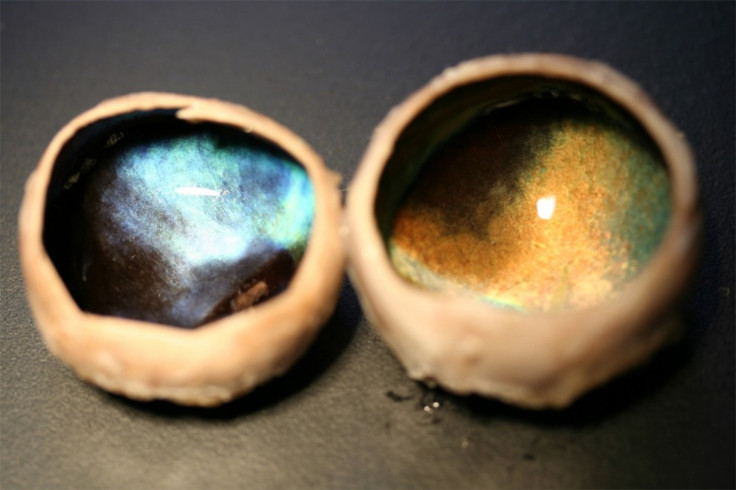10 Amazing Scientific Discoveries In 2013: From Color-Changing Reindeer Eyes To Beneficial Allergies

Science is happening all around you, above you, and beneath you, all the time. It's in the satellites that monitor the state of the climate, the laboratories and field stations that try to unravel the mysteries of animal behavior, and the robots that venture into the wastelands on alien worlds. Here are some of our favorite scientific discoveries of 2013:
1) Rat Mind-Meld: In an experiment seemingly ripped from the pages of pulp fiction, Duke University neuroscientist Miguel Nicolelis and colleagues melded the minds of two rats – one in the U.S. and one in Brazil – with the help of some electrodes and the Internet. To successfully solve a puzzle and get a reward, one rat had to transmit mental instructions to the other about which of two levers to push. While the rats’ performance wasn’t perfect, the results were good enough to spur Nicolelis to plan further experiments in rodent telepathy – and perhaps primate mind-melding in the near future.
2) Take Two Novels and Call Me In The Morning: A good book is good for your social skills, researchers say. Two psychologists at the New School in New York City found that reading a passage of literary fiction helps people score higher on certain tests related to empathy, while reading nonfiction or popular fiction does not. The authors think literary fiction might prime us to perceive others’ emotions and thoughts by focusing on characterization over straight plot, and by “showing” details to the reader, rather than “telling.”
3) Forget Your “Jurassic Park” Fantasies: Sadly, the idea of cloning dinosaurs by extracting their DNA from the blood meals of mosquitoes preserved in amber will have to remain in the fiction section. This year University of Manchester scientists found they could not get a good DNA sample from even very recently preserved insects – 60 years old and 10,600 years old. That makes the chances of recovering genetic material from the age of the dinosaurs – which ended 65 million years ago – seem pretty slim.
4) Allergies Might Be Good For You: A small injection of honeybee venom helped protect lab mice against later, heavier doses of the same venom, researchers from a Yale University-led team found. And the antibody that kicks off allergic reactions, immunoglobulin E (IgE), seems to be essential for this protective effect. Dangerous allergic reactions may just be the result of a natural process gone haywire, the researchers believe.
5) Life On Mars Seems Likely: NASA’s Curiosity rover has been stacking up some pretty powerful circumstantial evidence showing that Mars may have been able to support life in the past. The robot has uncovered elements that form the basic building blocks of life locked away in minerals on Mars. And in December, Curiosity found geological traces left by an ancient lake. Will 2014 be the year that the plucky robot clinches proof of Martians? Stay tuned …
6) Dung Beetles Look To The Stars: The light of the Milky Way turns out to be very important to South African dung beetles. An international team of researchers was surprised to discover that the insects use the bright band of light emanating from our galaxy to guide their steps as they roll their little balls of poop along.
7) Ruffling Feathers In The Dinosaur World: After years of depicting dinosaurs as scaly, reptile-like creatures, scientists have largely jumped on the feather bandwagon. But now a few scientists are saying it's time for a reality check. It’s pretty clear that the therapods, which gave rise to modern birds, exhibited some kind of primitive feathery structures. But a new analysis of dinosaur skin samples shows that most nontheropod dinosaurs – including long-necked sauropods, Triceratops and Stegosaurus – probably favored armor and scales over filamentous feathers.
8) Hot Time In The Ocean: Not an awesome discovery, but an important one – it turns out Earth’s oceans are warming at an accelerating rate. This may explain what’s called the “missing heat” problem. Land-surface temperatures aren’t rising as quickly as many scientists expected. Now it seems that much of that excess heat trapped by greenhouse gases is going into the deep ocean.
9) Neonicotinoid Pesticides Fall Under Greater Scrutiny: Is this the new DDT? Scientists are sounding the alarm about a class of pesticides called neonicotinoids, which are derived from nicotine and act on insect nervous systems. The pesticides have been previously implicated in the deaths of bees; this year, they were linked to toxic effects in birds and humans.
10) Color-changing reindeer eyes: Scientists have long been perplexed by the curious phenomenon of reindeer eyes, which are golden in summer, but deep blue in winter. This year, University College London researcher Glen Jeffery and colleagues think they’ve discovered the secret to this switcheroo. Over the long, dark Arctic winter, a reindeer’s pupils dilate – much like yours do in a dark room. But in this case, the reindeer pupils are dilated for months at a time, which ends up blocking small blood vessels in the eyes, which builds up pressure inside the eye and squeezes certain tissues of the eye together, causing the iris to reflect blue wavelengths of light rather than yellow.
© Copyright IBTimes 2024. All rights reserved.





















